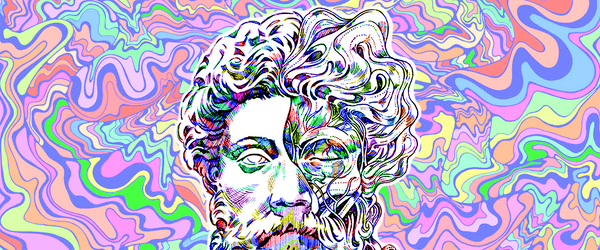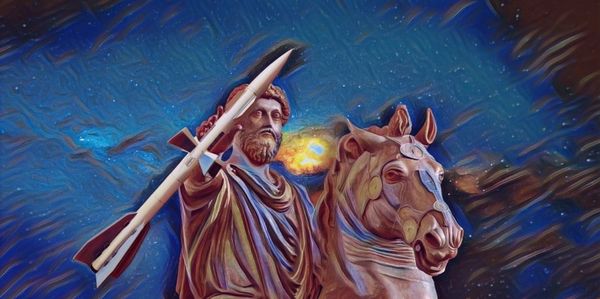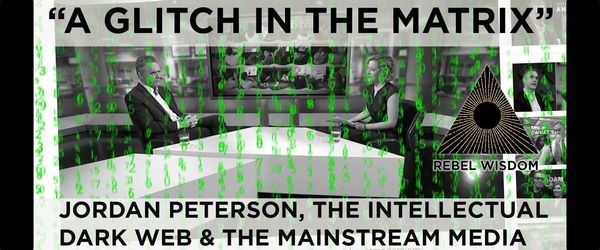Chris Brady • • 10 min read
Leonardo Da Vinci’s Sfumato Principle: Embracing Uncertainty with Ease

Life has been a mystery since the beginning.
Death is the greatest mystery that we don’t like to talk about. Who can blame us? The uncertainty of not knowing can be painful, uncomfortable and even threatening.
Uncertainty comes in all forms, and although we all-too-often shield ourselves with illusions of certitude, the present coronavirus pandemic makes uncertainty more palpable than ever.
Despite an ongoing worldwide effort, we still don’t know much about the coronavirus. According to James Gallagher’s BBC news article, we haven’t been able to answer basic questions such as: How many people have been infected? How deadly is it? What are the full range of symptoms? Where exactly did it come from? Can you get it twice? Will the virus mutate? And more…
As healthcare professionals continue to seek solutions, many of us confined to our homes during this Great Pause around the world wonder just how long this pandemic will last–we just don’t know.
The misinformation, conspiracy theories and mixed-messages from both experts and leadership amplify our uncertainty of what to believe.
The question remains: how can we transform the coronavirus crisis into an opportunity to better embrace uncertainty so that we may not only maintain our sanity but also thrive so as to create a better world out of these unsettling times?
Da Vinci’s Response to Uncertainty
The Italian painter, renaissance man and creative genius, Leonardo Da Vinci, can teach us how to make the most out of uncertainty.
In How to Think Like Leonard Da Vinci: Seven Steps to Genius Everyday (1998), Michael J. Gelb, an author specializing in creativity and innovation, states:
“The theme of the tension of opposites appears repeatedly in [Da Vinci’s] work and grew in intensity through his lifetime… Leonardo’s contemplation of opposition and paradox took many forms. It is expressed in the love of puns, jokes, and humor and in the fascination with riddles, puzzles, and knots recorded throughout his notebooks.”
Gelb’s book suggests practical ways for us to cultivate Da Vinci’s genius principles. The other principles include curiosity, demonstration, sensation, art/science, corporality, and connection.
These principles taken together encourage the holistic development of the individual. Though, Da Vinci’s ‘sfumato’ principle teaches us how to embrace uncertainty.
Given the rapid development of technology and the increasing connection of the world, Gelb reminds us of the importance to develop this capacity of embracing uncertainty:
“In the past, a high tolerance for uncertainty was a quality to be found only in great geniuses like Leonardo. As change accelerates, we now find that ambiguity multiplies, and illusions of certainty become more difficult to maintain. The ability to thrive with ambiguity must become part of our everyday lives. Poise in the face of paradox is a key not only to effectiveness, but to sanity in a rapidly changing world.”
As the world continues to connect globally, and when various cultural perspectives come into further contact with one another, disagreements are bound to happen. A tolerance for uncertainty can help diverse people coexist with one another.
A tolerance for uncertainty will help shield us from a need to know ‘the answer,’ while opening us to consider multiple perspectives other than our own. It can help us build immunity against certain religions, cults and conspiracy theories trying to preach us their one and only truth.
Overall, a tolerance for uncertainty can help make us more intelligent, empathetic, as well as, it can protect us from giving in to tyrants’ imposing ideas.
What is Sfumato?
Originally a painting technique popularized by Da Vinci, ‘sfumato’ is foremost a subtle way to blend colors so that they melt into each other without clear transitions, lines or edges. Derived from the Italian word ‘fumo’ (smoke), sfumato translates as “smoked”, “going up in smoke” or “turned to mist” (143). It could also mean soft, vague or blurred.
The sfumato principle is “a willingness to embrace ambiguity, paradox, and uncertainty” (142). Gelb describes sfumato as one of Da Vinci’s most unique qualities:
“Leonardo’s ceaseless questioning and insistence on using his senses to explore experience led him to confront the vastness of the unknown and ultimately the unknowable. Yet his ability to hold the tension of opposites, to embrace uncertainty, ambiguity, and paradox, was a critical characteristic of his genius.”
The Sfumato principle is similar to the English romantic poet John Keats’ concept of ‘negative capability.’
Negative capability describes a capacity of the greatest writers (such as Shakespeare as Keats thought) to pursue artistic beauty without the pressure of conforming to the framework of logic and science, according to the Poetry Foundation’s Glossary of Terms. It’s the ability to explore beauty beyond the limits of what we know.
According to the Poetry Foundation, Keats supposed that a great thinker is “capable of being in uncertainties, Mysteries, doubts, without any irritable reaching after fact and reason.” Da Vinci echoes this sentiment of doubt when he once said: “That painter who has no doubts will achieve little.”
The Sfumato principle, like negative capability, describes a person’s ability to accept both the unknown and confusion as opposed to clinging for philosophical certainty.
Sfumato is also akin to the concept of Socratic Wisdom (paradoxically the same as Socratic Ignorance), which is the wisdom that knows just one thing: that it knows nothing.
Socratic Wisdom is accepting your ignorance and claiming that you don’t know anything without reasonable doubt.
Sfumato is the ability to sit comfortably, or at least willingly, in the gray areas of life, without a need to seek refuge in the clearly marked areas of black and white. Sfumato is being okay with not knowing the mystery of life, but it’s also about learning to appreciate this mystery with a pair of fresh eyes along with a mind open to wonder.
How to Develop Sfumato
You can assess your ability in embracing uncertainty by considering the following questions. (Note: if you have a tendency to jump to conclusions, then you probably have a harder time with not knowing.)
Assess Your Sfumato:
• Are you comfortable with ambiguity?
• Are you in touch with your intuition?
• Do you thrive with change?
• Do you enjoy riddles, puzzles, and puns?
• Do you know when you’re feeling anxious?
• Do you spend enough time on your own?
• Do you trust your gut?
• Can you hold contradictory ideas in your mind?
• Do you appreciate the importance of conflict in inspiring creativity?
If you said yes to all of these questions, then you embrace uncertainty well.
No matter where your assessment sits, Gelb offers all of us some practical ways to cultivate sfumato within us.
Make Friends with Ambiguity
- Reflect on Ambiguity — Describe situations in your life where you experienced ambiguity. Perhaps you didn’t know whether to laugh or cry in pain when someone tickled your rib. Or, maybe breaking up with a partner was both liberating yet sad. How do you respond to ambiguity? Do you jump to conclusions? Do you explore multiple perspectives? How are ambiguity and anxiety related?
- Reflect on Anxiety — To thrive with uncertainty and ambiguity, we must learn to know when we are anxious. As Gelb says, “As we become conscious of our anxiety we can learn to accept it, experience it, and free ourselves from limiting compulsions of thought and action.”Describe the feeling of anxiety. Are there different types of anxiety? Where do you experience it in your body? How do you respond to different feelings of anxiety? Make anxiety a theme for a day and record your observations in your notebook.
- Monitor Intolerance for Ambiguity — Count the number of times per day that you use an absolute, such as “totally,” “always,” “certainly,” “must,” “never,” and “absolutely.” Note the way you close conversations. Do you end with a statement or a question? (As a lawyer, my older brother loves reminding us never to speak in absolutes–never, aha!)
Cultivate Confusion Endurance
- Contemplate the Paradox of Opposites — The Sfumato principle, as Gelb puts it, touches the essence of being.
“Just as day follows night, our capacity for joy is born in sorrow. We are each the center of a unique and special universe and totally insignificant specks of cosmic dust. Of all the polarities, none is more daunting than life and death. The shadow of death gives life its potential for meaning.”
You can sharpen your senses in the face of paradox and embrace creative tension by contemplating the relationship between opposites in any of the following paradoxes: Joy and Sorrow; Intimacy and Independence; strength and weakness; good and evil; change and constancy; humility and pride; goals and process; life and death. The key is to think about how these opposites are really two sides belonging to the same coin.
- For Parents and their Children — Fathers, Mothers, Parental Guardians, Gelb suggests that young children are not ready to deal with profound paradoxes of life. They do, however, love riddles and mysteries. You can cultivate Sfumato with games, puzzles and stories. For example, you can tell your kids the same bedtime stories but make up different endings each time. Gelb states, “In addition to stimulating your own imaginative powers, you will be encouraging their delight in the unknown.”
Incubation and Intuition
The concept of incubation is important to understand before taking on the following exercises. Incubation is about working intelligently. As Da Vinci states, “The greatest geniuses sometimes accomplish more when they work less.”
By incorporating periodic rest throughout our work process, we are able to both sharpen our creativity and utilize our subconscious mind in such a way that it can lead us to more frequent insights on the problems we are working to solve. Gelb states:
“Discovering and learning to trust your incubatory rhythms is a simple secret to accessing your intuition and creativity. Sometimes incubation yields an obvious insight, or Aha! But frequently the fruits of unconscious work are subtle and easy to overlook. The muses demand attention to the delicate nuances of thought, listening for the faint whispers of shy inner voices.”
Sometimes sleeping on a problem leads to awakening to a solution, which means that we must allow the solution to find us rather than us find it.
Look up Alan Watts on YouTube telling the Zen story of the woodcutter and you’ll get the following idea that the more we seem to search for the solution, the more we seem to repel the solution away from us. You didn’t know those brilliant thoughts were bashful creatures?
In order to utilize incubation and access your own intuitive genius, you have to provide yourself space that will allow perceptions, ideas, and feelings to develop on their own.
We are usually at our most brilliant when we are receptive and not trying to be brilliant. We are at our most when we transform ourselves into vessels for genius ideas to work through. By knowing when to step away from our work, we give ourselves time and space in order to let greater solutions emerge.
Imagine the time a chocolate chip cookie needs in order to bake properly. The time we spend preparing the cookie sheets and dough make up the work. When we place it in the oven, we have no choice but to step back from our work and trust that the process will take care of itself. If you want to learn more about this idea of letting go and surrendering to the process, then check out Lao Tzu’s ancient Chinese spiritual audiobook of wisdom Tao Te Ching, which is free and a short listen on Youtube.
Sometimes not knowing can help us let go of our need to control everything.
In letting go of control, we can learn to delegate tougher problems to sources more intelligent than us, while also saving us from stress. Take your subconscious mind for example. Gelb states:
“Neuroscientists estimate that your unconscious database outweighs the conscious on an order exceeding ten million to one. This database is the source of your creative potential. In other words, a part of you is much smarter than you are. The wisest people regularly consult that smarter part. You can, too, by making space for incubation.”
Let the solutions come to you by resting more, however, closely heed what Gelb tells us of smart resting. This is the most important take away from incubation:
“But incubation is most effective when you alternate, as Leonardo did, between periods of intense, focused work, and rest. Without periods of intense, focused work, there is nothing to be incubated.”
Think of it this way. If we don’t prepare the cookie dough, then our subconscious oven will give us no cookies. The idea is to be a co-creator with our subconscious mind. Give and take.
As my Catholic mom likes to say, God helps those who help them themselves. When you help yourself, your subconscious mind will help you.
- Relax and Spend time in Solitude — As Gelb says, “almost no one claims to get their best ideas at work.” Rather, people most often experience their breakthrough ideas when they are relaxed and by themselves. Da Vinci echoed this sentiment, “The painter must be solitary… For if you are alone you are completely yourself, but if you are accompanied by a single companion you are half yourself.”
Take time for solitude and relaxation. Take a little time, at least once or twice a week, to go for a walk or just sit quietly by yourself. Try resting in bed, taking a shower or bath, or a walk in the woods.
You can contemplate a problem you are trying to solve right before bed. Then ask yourself the question right before you fall asleep. That way your question will be the last thing that your subconscious mind will listen to before you sleep.
- Take Little Work Breaks — Many of us work in a focused, left-brained fashioned, according to Gelb. We sometimes get so involved in a project that we begin to lose perspective. You can increase your enjoyment and effectiveness when working or studying by taking breaks every hour or so. Or you could use the Pomodoro technique (25 minutes of work with breaks every 5 minutes, and repeat). Like Da Vinci said in his Treatise on Painting: “…it is well that you should often leave off work and take a little relaxation because when you come back to it you are a better judge…”
- Utilize the Occasional 10-minute Brain Break — Gelb suggests try
listening to jazz or classical music, creative doodling, meditation, Yin Yoga or stretching exercises that promote relaxation and incubation. In addition to hourly work breaks, make sure to enjoy some kind of weekly Sabbath. After all, the Lord created the world in 6 days and took the 7th day off! Gelb also recommends that we take a true vacation every year if possible (perhaps not anytime too soon given the current global situation). - Trust Your Gut — Bring more attention to everyday hunches and intuitions. When you take time for solitude, whether it be on a walk through nature, driving in the car or just lying in bed, remember to check in with your body, particularly your heart. Practice quieting the mind and finding your self in a place of stillness. This can be achieved in either meditation, yoga or in any activity you do by yourself. Listen for the quiet and clear voice from within. Recognize its impulse and try following it even if you don’t know where it will take you– this way you can learn to slowly trust and follow in your intuition. Jim Morrison’s tombstone, translated from Greek, reads “True his own spirit” because he lived his life following his own intuition. I can’t promise that following your own intuition won’t get you into trouble, but I can promise you that following your own inner guidance on a consistent basis will make you feel that you’re living true to yourself.
Conclusion
Although your boss may remain unconvinced that you need to work less in order to achieve more, and although these exercises may not totally take away your fear of the unknown, cultivating ‘sfumato’ will lead you through an exploration of life’s perplexing nature.
By spending more time in both considering life’s perplexity as well as knowing when to take a break from it, we can learn to deepen our appreciation for the mystery of existence. And perhaps, we can find peace, acceptance and wisdom in the process.
Who knows? Whatever the cure for the coronavirus may be, perhaps the solution is more likely to strike these doctors while they’re showering.

![Seneca’s Groundless Fears: 11 Stoic Principles for Overcoming Panic [Video]](/content/images/size/w600/wp-content/uploads/2020/04/seneca.png)








